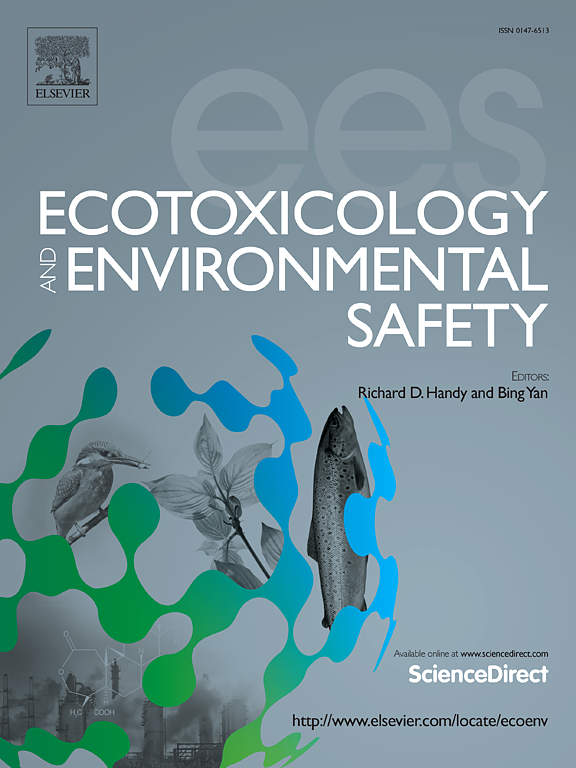Evaluation of the combined impact of aflatoxin B1 and deoxynivalenol fed to Penaeus vannamei and mitigation properties provided by a yeast cell wall extract
IF 6.2
2区 环境科学与生态学
Q1 ENVIRONMENTAL SCIENCES
引用次数: 0
Abstract
The purpose of this study was to examine how white shrimp (Penaeus vannamei) responded to varying concentrations of combined mycotoxins (aflatoxin B1 (AFB1) and deoxynivalenol (DON)) as well as the mitigating effects of an adsorbent (yeast cell wall extract, YCWE). The experiment comprised of five groups receiving isonitrogenous and isolipidic diets: CON (control group), LDA (CON with 20 μg/kg AFB1 and 1500 μg/kg DON), HDA (CON with 100 μg/kg AFB1 and 3000 μg/kg DON), LDAM (LDA with 0.2 % YCWE), and HDAM (HDA with 0.2 % YCWE). Results showed that the contents of total protein, total cholesterol, hemocyanin, and enzyme activities (e.g., catalase, phenoloxidase) in plasma were lower in HDA group, while the alanine aminotransferase activity and malondialdehyde content were higher. The HDA group showed up-regulated expression of apoptotic genes in the hepatopancreas but down-regulated expression of immune-related and antioxidant genes. In the LDA and HDA groups, the higher expression of inflammatory genes in hepatopancreas, the lowest chewiness of muscle and the higher abundance of potential pathogens (e.g., Escherichia-Shigella) in the intestine were observed. However, LDAM and HDAM diets were able to enhance the immune response, antioxidant capacity, and hepatopancreatic and intestinal health of shrimp, especially increased the abundance of intestinal bacteria for detoxification (e.g., Pseudomonas). Moreover, dietary YCWE also led to significantly greater mycotoxin content in the feces. In conclusion, the combined mycotoxins AFB1 and DON can negatively affect the health of shrimp, even at lower doses. But adding YCWE to the diets can effectively mitigate these negative effects.
求助全文
约1分钟内获得全文
求助全文
来源期刊
CiteScore
12.10
自引率
5.90%
发文量
1234
审稿时长
88 days
期刊介绍:
Ecotoxicology and Environmental Safety is a multi-disciplinary journal that focuses on understanding the exposure and effects of environmental contamination on organisms including human health. The scope of the journal covers three main themes. The topics within these themes, indicated below, include (but are not limited to) the following: Ecotoxicology、Environmental Chemistry、Environmental Safety etc.

 求助内容:
求助内容: 应助结果提醒方式:
应助结果提醒方式:


